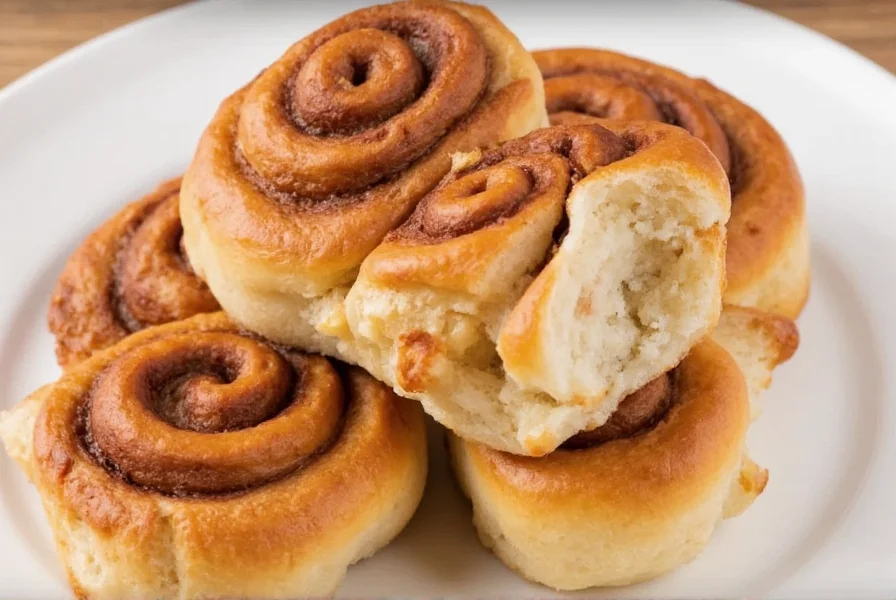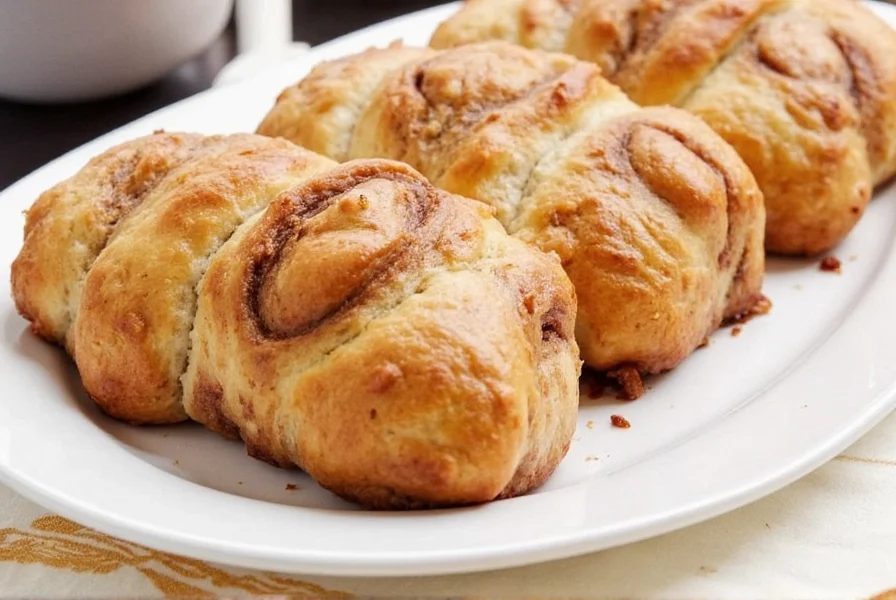The most reliable method for making cinnamon rolls in a bread maker involves using the dough cycle setting, then shaping and baking the rolls separately. Bread makers can't properly bake filled cinnamon rolls due to their shape and filling requirements, but they excel at preparing the perfect dough with consistent kneading and rising. For best results, use a bread machine's dough cycle for 1.5-2 hours, then manually shape the cinnamon filling, roll, cut, and bake in the oven for optimal texture and flavor.
Creating delicious cinnamon rolls using a bread maker combines the convenience of automated dough preparation with the authentic taste of homemade pastries. While many home bakers mistakenly believe they can bake filled cinnamon rolls directly in the bread machine, understanding the proper technique unlocks consistently perfect results. The bread maker's dough cycle function provides ideal kneading and rising conditions that are difficult to replicate by hand, setting the foundation for tender, fluffy cinnamon rolls every time.
Why Bread Makers Excel at Cinnamon Roll Dough Preparation
Bread machines offer precise temperature control and consistent kneading that's crucial for developing the gluten structure in cinnamon roll dough. The automated dough cycle typically runs for 90 minutes to 2 hours, providing optimal rising conditions without overworking the dough. This consistent environment produces a more uniform texture than hand-kneading, which directly impacts the final roll's tenderness. Professional bakers note that the controlled humidity inside bread makers prevents the dough surface from drying out during rising—a common issue when using traditional methods.
Essential Ingredients for Perfect Bread Maker Cinnamon Rolls
The ingredient ratios for bread maker cinnamon rolls differ slightly from traditional recipes to accommodate the machine's kneading action. For a standard 1.5-pound loaf setting:
| Ingredient | Measurement | Temperature Notes |
|---|---|---|
| All-purpose flour | 3 cups (360g) | Spoon and level method |
| Whole milk | 1 cup (240ml) | 105-110°F (warm but not hot) |
| Unsalted butter | 3 tablespoons | Melted and cooled slightly |
| Granulated sugar | 3 tablespoons | Divided for dough and filling |
| Active dry yeast | 2¼ teaspoons | Verify expiration date |
| Egg | 1 large | Room temperature |
Ingredient temperature significantly affects yeast activation. Milk that's too hot will kill the yeast, while cold ingredients slow the rising process. The bread maker's enclosed environment maintains ideal conditions for yeast development when ingredients are properly measured and prepped.
Step-by-Step Bread Maker Cinnamon Roll Process
Follow this proven method for flawless results:
- Prepare ingredients: Measure all ingredients precisely using kitchen scales for accuracy. Warm milk to 105-110°F.
- Load bread maker: Add ingredients to the machine in manufacturer-specified order (typically liquids first, then dry ingredients, with yeast in a separate well).
- Select dough cycle: Choose the "Dough" setting and start the machine (typically 1.5-2 hours).
- Prepare filling: While dough rises, mix ½ cup softened butter, 1 cup brown sugar, and 2 tablespoons cinnamon.
- Shape rolls: After the cycle completes, roll dough into 16x12 inch rectangle, spread filling, and roll tightly.
- Cut and proof: Slice into 12 rolls, place in greased pan, and let rise 30-45 minutes until doubled.
- Bake: Oven at 350°F for 20-25 minutes until golden brown.
Troubleshooting Common Bread Maker Cinnamon Roll Issues
Even experienced bakers encounter challenges with bread machine cinnamon rolls. Here's how to solve frequent problems:
- Dense rolls: Usually caused by too much flour or inactive yeast. Measure flour by spooning into measuring cup (don't scoop), and verify yeast expiration.
- Dough not rising: Check milk temperature—too hot kills yeast, too cold slows activation. Ideal range is 105-110°F.
- Rolls spreading sideways: Dough was over-proofed or filling too wet. Chill shaped rolls 10 minutes before baking.
- Burnt bottoms: Place baking pan on middle oven rack with aluminum foil underneath.
Expert Variations for Bread Machine Cinnamon Rolls
Once you've mastered the basic technique, experiment with these professional variations:
- Cheesecake swirl: Add 4 oz softened cream cheese to the filling mixture for a decadent twist on classic bread maker cinnamon rolls
- Overnight preparation: After shaping, refrigerate rolls overnight, then let sit at room temperature 30 minutes before baking
- Whole wheat option: Substitute 1 cup all-purpose flour with white whole wheat flour for added nutrition without compromising texture
- Gluten-free adaptation: Use certified gluten-free flour blend with 1 teaspoon xanthan gum for successful bread machine cinnamon roll dough
Storage and Reheating Techniques
Proper storage maintains freshness and texture:
- Store cooled rolls in airtight container at room temperature for up to 2 days
- For longer storage, freeze individual rolls wrapped in plastic and placed in freezer bags for up to 3 months
- Reheat frozen rolls by microwaving 20-30 seconds, then finishing in 300°F oven for 5 minutes for optimal texture
- Revive day-old rolls by placing in microwave with cup of water for 15 seconds

Maximizing Your Bread Maker's Potential
Understanding your specific bread machine model enhances cinnamon roll success. Consult your manual for exact dough cycle duration and capacity limitations. Most standard 1.5-pound loaf machines handle enough dough for 12 standard cinnamon rolls. High-end models with customizable settings allow adjusting kneading time for optimal gluten development. Remember that ambient kitchen temperature affects rising time—colder environments may require extending the proofing period after the dough cycle completes.
Frequently Asked Questions
Can you bake cinnamon rolls directly in the bread maker?
No, bread makers cannot properly bake filled cinnamon rolls due to their cylindrical shape and the need for even heat distribution. The bread maker's strength is in the dough cycle for preparation, but you must shape and bake the rolls in the oven for proper texture and appearance.
What's the best bread machine setting for cinnamon roll dough?
The "Dough" cycle is ideal for cinnamon roll preparation. This setting typically runs 90-120 minutes and handles both kneading and the first rise. Avoid using the "Basic" or "Sweet" bake cycles as these will cook the dough rather than preparing it for shaping.
Why do my bread maker cinnamon rolls come out dense?
Dense cinnamon rolls typically result from too much flour, inactive yeast, or insufficient rising time. Measure flour by spooning into measuring cups (don't scoop), verify yeast expiration, and ensure proper milk temperature (105-110°F) for optimal yeast activation when making bread machine cinnamon roll dough.
Can I make overnight cinnamon rolls using a bread maker?
Yes, you can prepare overnight cinnamon rolls using your bread maker. Complete the dough cycle, shape the rolls, then refrigerate them in the baking pan. The cold slows fermentation while allowing flavors to develop. Remove from refrigerator 30 minutes before baking for best results with bread maker cinnamon rolls.
How do I prevent cinnamon filling from leaking during baking?
To prevent filling leakage in bread maker cinnamon rolls, ensure your dough rectangle is rolled tightly but not stretched thin. Chill shaped rolls for 10 minutes before baking, and avoid overfilling—use no more than 1 cup of filling for a standard recipe. Creating a small seal along the bottom edge of the rolled dough also helps contain the filling.











 浙公网安备
33010002000092号
浙公网安备
33010002000092号 浙B2-20120091-4
浙B2-20120091-4